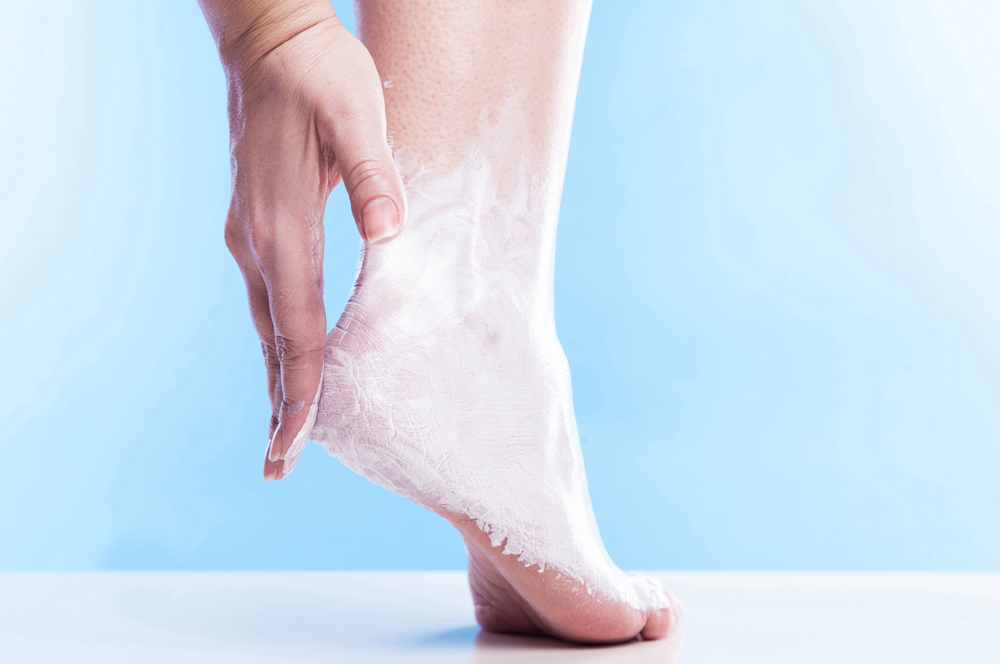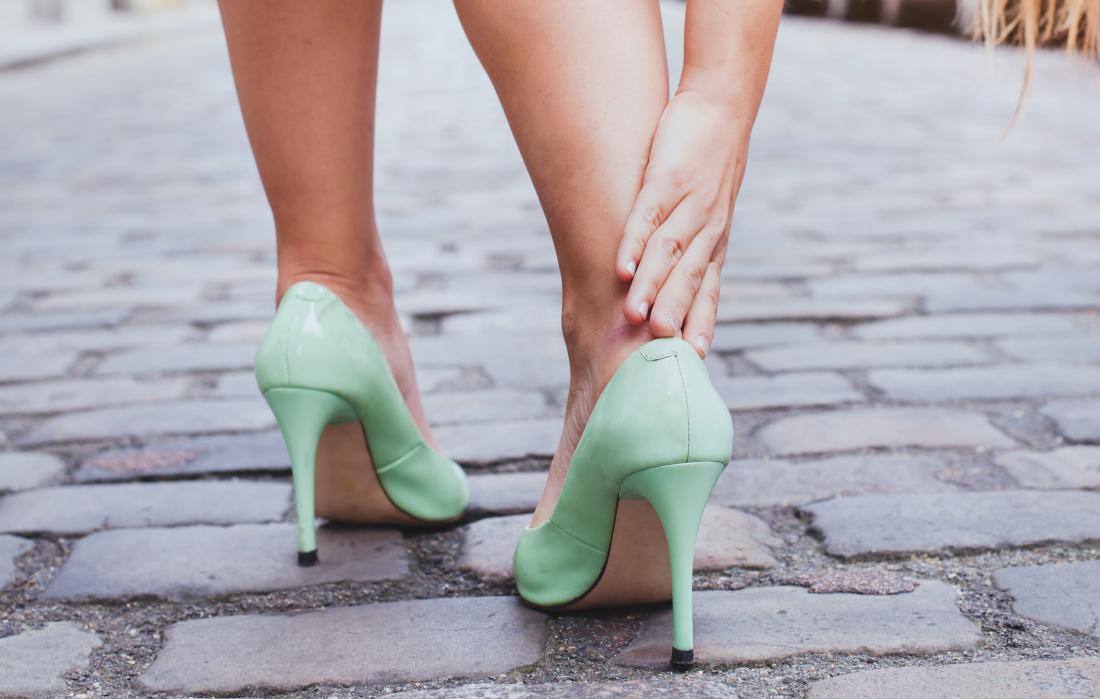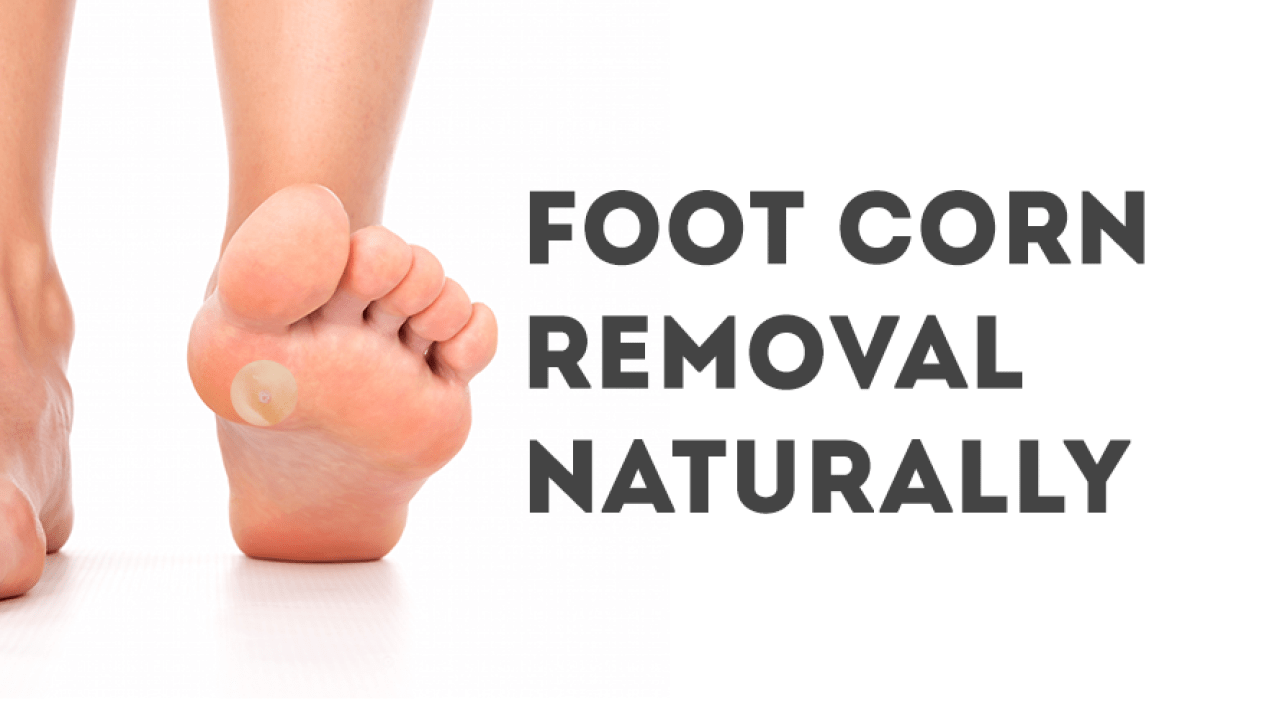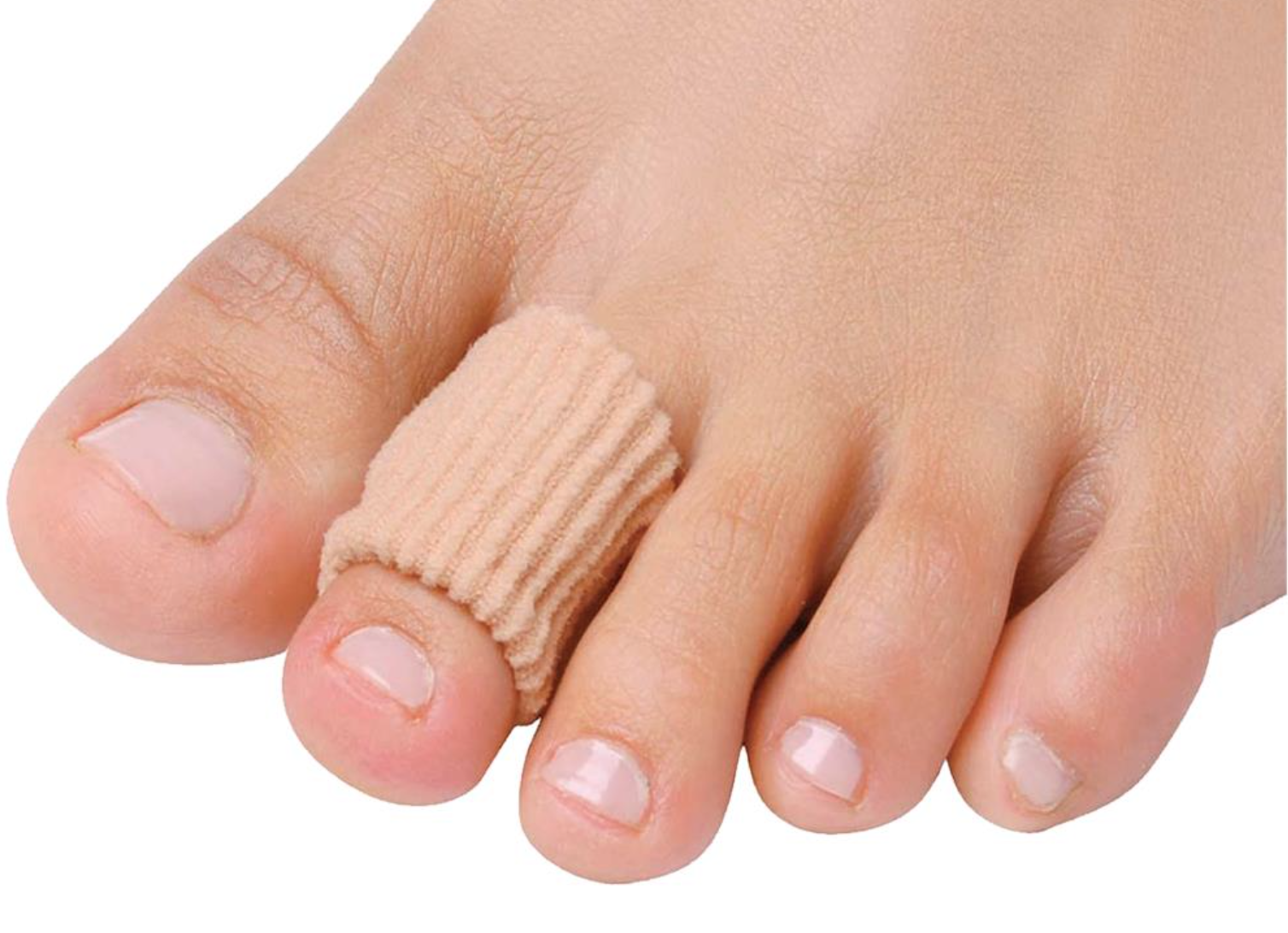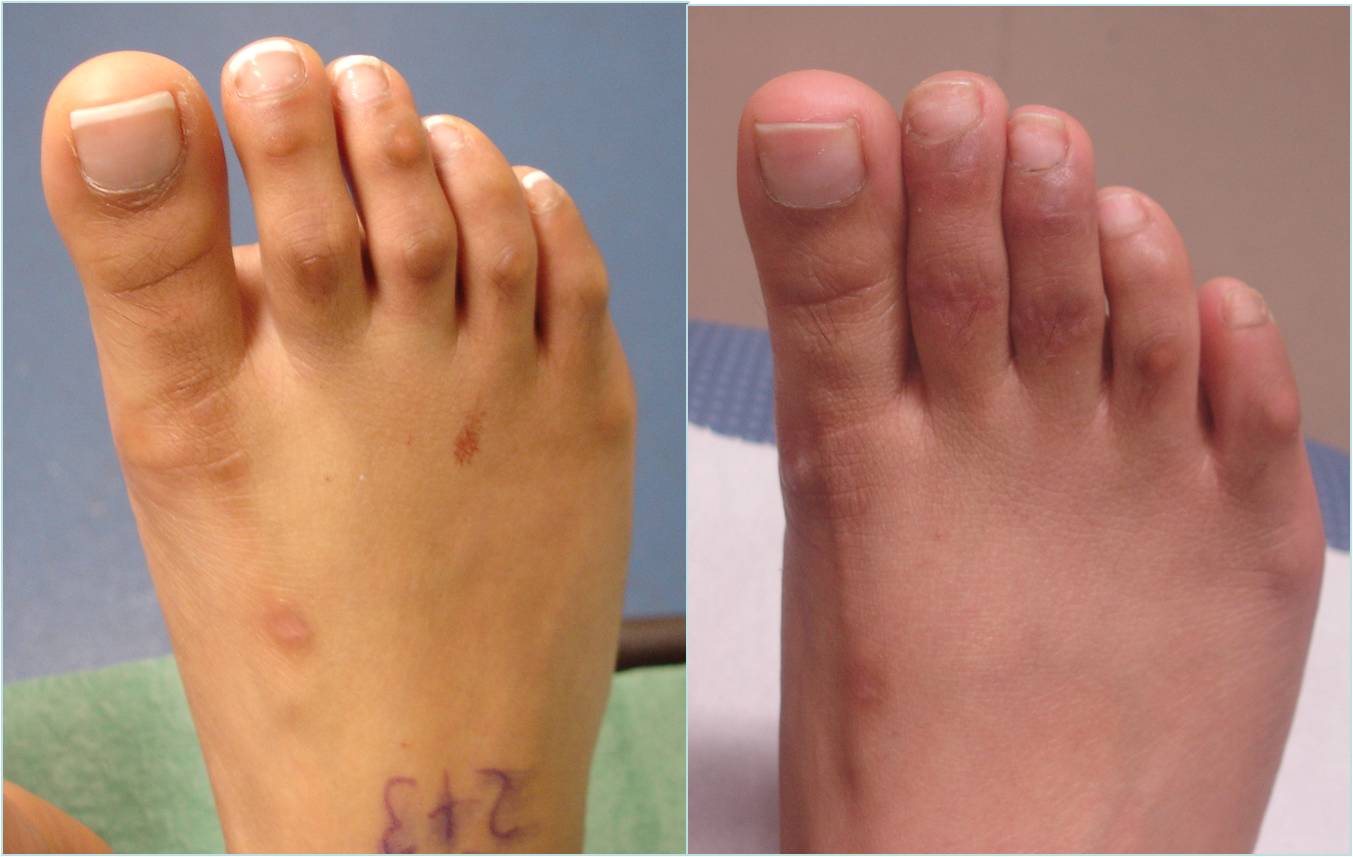A. Home Remedies to Treat Foot Corns
The layers of hardened skin that form on the foot can make each step painful. But don’t worry! They are calluses that are easily curable. Calluses form when you wear shoes that are too tight or constantly rubbing against the surface when a person stands for long periods of time. Calluses can occur in the foot areas below:
- Between the toes
- Under the toenail bed
- At the bottom of your feet
- On the sides of the feet
1. Symptoms of calluses
The symptoms of the calluses on the feet are obvious and easy to recognize. Some of the callus signs are listed below:
- Touch sensitive skin
- Pain when wearing shoes
- Hard, rough, yellowish spot with rough or lumpy skin
2. How are the corns of the feet treated?
a. Dip your feet in hot water
According to the experts, dipping your feet in warm water will soften them. To treat the corns at home, you can immerse the corns in warm water for about 10 minutes or until the skin becomes soft. After this procedure, you will remove the corns by rubbing them.
b. Applying callus lotion
The use of a cream with salicylic acid or a moisturizing lotion can also be useful in the treatment of calluses. Salicylic acid has the power to dissolve the keratin protein that causes corn and the dead skin around it. However, diabetics, people with poor circulation or sensitive skin should not use salicylic acid cream or should only use it after consulting a dermatologist.
c. Use corn pads
A dressing can also be applied to the affected area to contain and treat the corn. However, keep in mind that these medicated dressings may contain salicylic acid, which can irritate the skin and cause infection, especially if you suffer from the conditions mentioned above.
d. Rub
The skin of the hen’s eye softens after a bath and is the right time to rub the affected area with a pumice stone, an emery board, a nail file or a washcloth to remove the hard skin layer. Be careful not to use a sharp object to work the skin, and avoid using a pumice if you have diabetes. Also, do not remove too much skin, as this can lead to bleeding or infection.
3. Limit foot friction
a. Wear comfortable socks and shoes
If you do not wear the correct size or shape of your shoes and wear underwear, it may lead to calluses. Therefore, wear shoes that fit a little looser and opt for good quality socks to avoid the risk of developing calluses.
b. Keep your toenails trimmed
Long toenails can continue to press your shoes, which can lead to callus. It is best to trim your toenails frequently to relieve this pressure and prevent calluses.
You should always consult a doctor before choosing home treatment for calluses if he or she suffers from peripheral artery disease or diabetes; or if you have very sensitive skin. A person should consult a doctor if there is pus or drainage, worsening of pain, redness or swelling in the calluses.
B. How To Treat Corns On Your Feet
Whether it was the last trend that forced us or a flat sale of 50%, we all bought shoes that barely fit us. They pinched, cut and squeezed us, but, hey, they looked good, right? From outside maybe, but as soon as we took them off, nobody saw the horrible calluses that left us standing! If you’ve tried this too, follow these 5 methods of corn removal to get rid of them immediately.
1. Wash
The right beauty product to soften and rub stubborn corns is Dove Gentle Exfoliating Body Wash. Its unique exfoliating beads keep dead skin cells away without being too hard on the body. It also consists of Nutrium Moisture technology, which penetrates deep into the skin to provide it with natural nutrients. Together, they soothe and nourish your feet while getting rid of their calluses.
2. Lemon never fails
Whether used in the kitchen or in a face mask, there is no ingredient that works as well as lemon. It can also do wonders for calluses on your feet – who knew! To remove calluses with lemon, cut a one-inch thick slice of lemon and place it directly on your corn. Attach it with a cotton bandage, put your foot in a sock and leave it overnight. Continue this practice for one week to ensure that the acidic nature of the lemon and its cleansing properties take away the corn.
3. Protect yourself
The calluses develop in areas of the body where there is a lot of friction. Many of us wear tight and poorly fitting shoes, which is why we have shims in the first place. To get rid of them, wear shoes that do not pinch or press the foot in any way. In areas of the foot where there is excessive friction, such as the heel or toes, apply gel compresses or band-aids to create a barrier between the shoes and prevent calluses from forming.
4. Apply jelly
The original Pure Skin Jelly Vaseline is a trusted member of all households, so it is no surprise that it can also be used to remove calluses. The triple clean formula seals the humidity on the applied area, leaving it soft and hydrated. To treat the calluses on the feet with Vaseline, apply a thick coat directly over the corn and leave it on the corn during the night. Within a few weeks, the corn will be soft enough to come out by itself.
5. Becoming natural
Here is a home remedy that you can use for the removal of corn that is completely natural. Fill a bowl with hot water and mix in a few drops of liquid soap and 1 cup of apple cider vinegar. Soak your feet in the mixture for 20-30 minutes. After that, dry your feet completely and apply castor oil generously over the affected area on your feet. Then wrap your foot in a sock and leave it overnight. Continue this treatment for 10 days to obtain the best results. The acidity of apple cider vinegar and the deep nourishing properties of castor oil soften the skin and loosen the horn of the foot so that it will eventually loosen.
C. How do you get rid of corns?
Calluses are hard lumps that develop on the skin, usually on the feet, in response to pressure and friction. A simple bath and scraping can help to soften the calluses and remove excess layers of skin. In many cases, your best remedy may be to try simple tips to prevent calluses.
As the shoes rub, the skin in the area hardens over time. The skin hardens to protect the delicate fabric underneath. People who wear ill-fitting shoes are more likely to develop calluses.
Calluses are similar to calluses, but usually do not cause pain or tenderness. Calluses are not a risk, although they can be very uncomfortable and cause irritation.
Fortunately, there are many simple and natural ways to treat corns. Medicated moisturizers can also help soften the skin to reduce corn. If the corn is particularly uncomfortable or painful, the person can consult a podiatrist for removal.
In the following sections, we list some methods that a person can try to get rid of corns at home.
1. Remove the source of friction
Removing the source of friction is the main (and easiest) way to get rid of corn. This alone can help the corn to disappear over time.
For example, if the friction of a particular pair of shoes is causing calluses, it may be sufficient to switch to shoes that are not causing that friction.
However, the use of other methods can help to speed up the process.
2. Lime the corn
Corns are layers of dead skin. Therefore, gently sanding the layers of dead skin can help remove the corn, especially if the person also removes the source of friction in the area.
a. How can I safely sand a corn?
Corn is placed in two stages.
Soak the corn in warm water for about 10 to 15 minutes. This will help to soften the skin.
Second, scrape the dead corn husk. There are many products that people can use to do this, including:
- Pumice stones
- Foot brushes
- Emery boards, this is the rough material of nail files
In some cases, the skin may be soft enough that a towel can be used to remove any dead skin.
b. Things to remember
The important thing is that people do not shred the corn too much.
Removing too much skin can reveal the delicate layers of skin underneath, which can cause more irritation.
In addition, the inner layers of the skin may be more sensitive, which increases the risk of bleeding and infection later.
3. Over the counter products
There are also over-the-counter (OTC) products that can be used to remove layers of corn.
Even if you are using OTC products, wetting and shaving your feet is still a good idea. This is because medications make it much easier to shave dead skin.
A notable OTC product is salicylic acid.
a. What is salicylic acid and how does it work?
Many scrubs, lotions and ointments contain salicylic acid.
There are also direct treatment options, including corn cob that contains salicylic acid. Humans can apply this directly to corn.
Salicylic acid helps to break down corn skin cells and facilitates their scraping.
b. How effective is salicylic acid for corns?
A study published in the Journal of Foot and Ankle Research compared treatment with salicylic acid to simply scraping corn in a doctor’s office. Scraping corn in a doctor’s office is a procedure called debridement.
The researchers found that the use of salicylic acid products resulted in better dissolved grains, less pain and a smaller corn size compared to simply scraping the corn.
c. Things to remember
People with sensitive skin or circulatory problems should consult a doctor before using salicylic acid. The content of salicylic acid in some products can be high.
People who use these products should be on the lookout for any signs of irritation or burning sensation on the skin. Stop using them if these characters appear.
People sensitive to salicylic acid can try products that contain other ingredients, such as urea or ammonium lactate. The American Academy of Dermatology notes that products that contain these ingredients can also help to gradually soften corn skin.
4. Medical treatment
If the corn doesn’t go away after trying these home remedies, there are some medical treatments that can help.
Research has shown that doctors first remove as much dead skin as possible using a scalpel or laser.
A person can also use topical products that contain various medications that help break down skin cells, including:
- Salicylic acid
- Urea
- Silver nitrate
- Hydrocolloid
If the corn squeezes a nerve, doctors can surgically remove the lump to relieve pressure.
5. Prevention tips
General tips for eliminating foot friction include:
a. Wear comfortable shoes
Friction directly affects calluses, making them much more likely to occur. So if you avoid shoes that are too tight or put your foot in an unnatural position, you can avoid that.
Avoiding shoes that are too big can also reduce friction as the shoe moves.
b. Use padding
The use of compresses such as bandages or corn pads to protect the sensitive area can also help to reduce symptoms.
Some people use pressure bandages to protect their feet when they need to wear extremely uncomfortable shoes.
c. Other tips
• A person must also:
- Clean your feet: Regularly cleaning and scrubbing your feet can help reduce dead skin cells in the area where calluses form.
- Trimming your toenails: trimming your toenails prevents your toes from entering the toe and causing friction. Short nails are also less likely to prick a finger next to them.
- Avoid lotions with alcohol: Moisturizing your feet is important, but using moisturizers that contain alcohol can cause additional dryness in the area.
6. When to see a doctor
If the corn is particularly large, tender or painful, it is best to consult a doctor or podiatrist.
People may also want to see their podiatrist to address foot problems that appear alongside calluses. This includes people with circulatory problems, diabetes, or very sensitive or fragile skin, which can cause a variety of foot problems.
The doctor will examine your feet to diagnose calluses. You will probably ask the person questions about their shoes and lifestyle.
You can then shave off dead skin and apply ointments or blemishes to the area. You can also make recommendations about changes in shoes or lifestyle.
7. Summary
Although corns are not a health risk, they can be very irritating. Home remedies can help control or remove calluses effectively in many cases. Medical treatments can help remove difficult calluses.
Although treatments can remove corn, they do not solve the underlying problem: the friction that the skin experiences. Changes in shoes, walking technique or lifestyle can help reduce friction in the feet and prevent calluses from returning.



